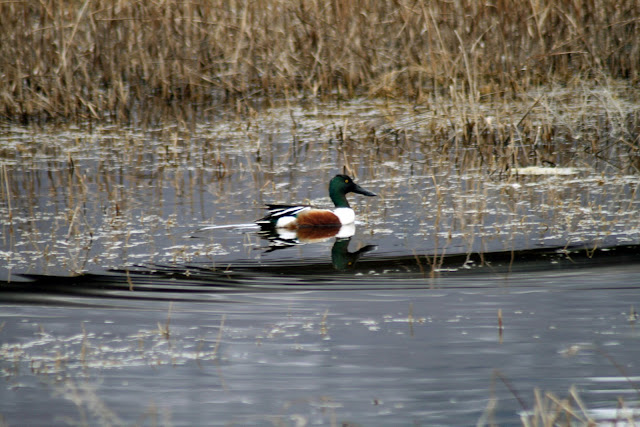 |
| Years before I got my camera I drew pictures of the birds I ID'd to keep my life list. I drew this picture to document my first sighting of a Great Horned Owl during a Scout training camp near Tooele Utah in 1996 |
The great horned owl is the most common owl of the Americas, easily recognizable because of the feather tufts on its head. These tufts resemble horns.
Great horned owls are adaptable birds and live from the Arctic to South America.
They are at home in suburbia as well as in woods and farmlands. Northern populations migrate in winter, but most live permanently in more temperate climes.
Nesting season is in January or February when the males and females hoot to each other. When close they bow to each other, with drooped wings. Mutual bill rubbing and preening also occurs. They do not build a nest of their own but utilise the nests of other birds such as the hawk, crow and heron. They may also use squirrel nests, hollows in trees, rocky caves, clumps of witches broom, abandoned buildings, or on artificial platforms. They are extremely aggressive when defending the nest and will continue to attack until the intruder is killed or driven off. Normally, two to four eggs are laid and incubated by the female only for 26-35 days.
 |
| I took this picture of this youngster last spring at the Fielding Garr Ranch on Antelope Island |
 |
| This picture is of it's very attentive mother sitting just a few branches above the baby and keeping a close eye on it and a close eye on anyone who came close. |
Great Horned Owls eat a broad diet of animals, from small mammals to rabbits, geese, and herons. Some birds, amphibians, reptiles, and invertebrates, but mostly mammals.The Great Horned Owl will take large prey, even other raptorial birds. It regularly kills and eats other owls, and is an important predator on nestling Ospreys. A couple of years ago the people out at Garr Ranch said that the Great Horned Owls killed and ate the Long-eared Owls that were nesting there. The Great Horned Owl is the only animal that regularly eats skunks.
 |
| I often find Owl Pellets around trees and on the deck of the Nature Center at Farmington Bay |
Pellets are very large, about 7.6 to 10.2 cm (3- 4") long and 3.8 cm (1.5") thick. Pellets are dark greyish-black and compact. Skulls as wide as 3 cm (1.2") are regurgitated whole. Pellets are regurgitated 6 to 10 hours after eating.

Great Horned Owls are nocturnal and become active about dusk. I have seen them flying over my neighborhood in Woods Cross Utah and have observed them at Farmington Bay at dusk many times. I see them regularly at the ranch at Antelope Island sleeping. When I walk by they will usually partially open one eye and watch me very carefully.
A truly magnificent Bird the Great Horned Owl in My choice for Bird of the Month for March 2012













.jpg)












